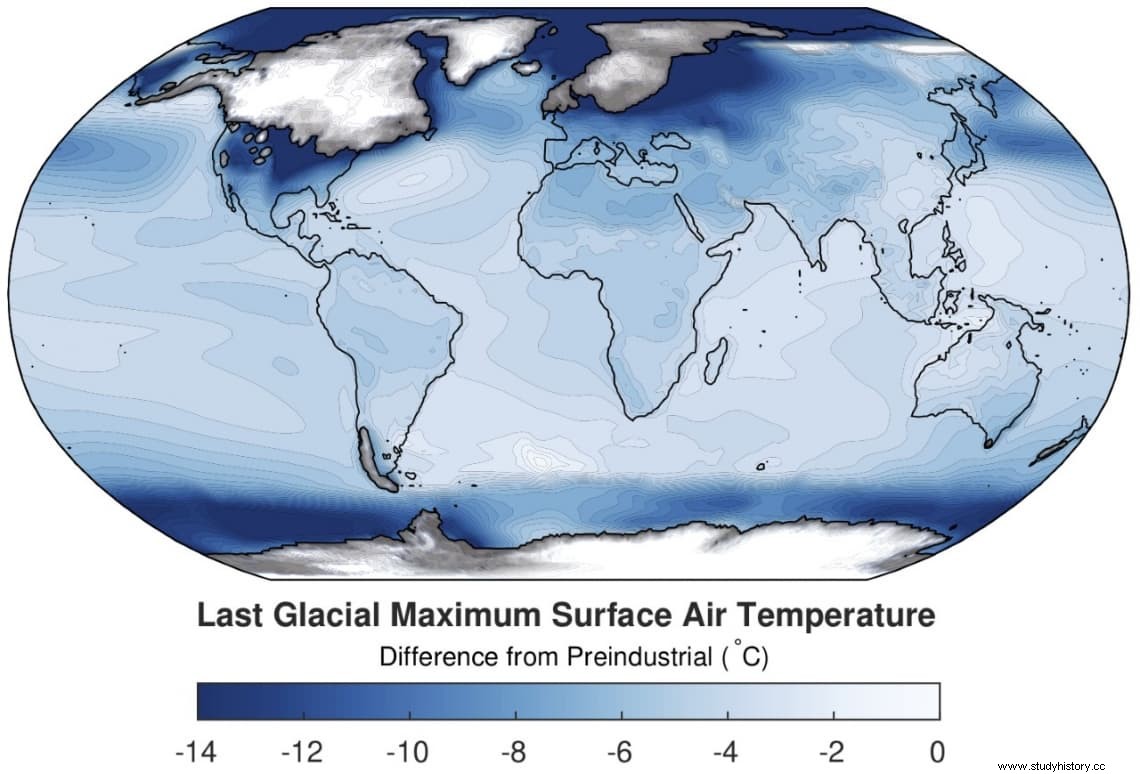A team led by the University of Arizona has managed to establish that the temperature of the last ice age, the last glacial maximum 20,000 years ago, was about 46 degrees Fahrenheit (about 7 degrees Celsius).
Their findings allow climate scientists to better understand the relationship between rising levels of atmospheric carbon dioxide, a major greenhouse gas, and average global temperature.
The Last Glacial Maximum, or LGM, was a glacial period in which massive glaciers covered about half of North America, Europe and South America, and many parts of Asia, while flora and fauna that adapted to the cold they prospered.
We have a lot of data on this period because it has been studied for a long time said Jessica Tierney, an associate professor in the Department of Geosciences at the University of Arizona. But one question science has wanted to answer for a long time is simple:How cold was the ice age?
Tierney is the lead author of the article published today Nature which found that the average global ice age temperature was 6 degrees Celsius (11 Fahrenheit) colder than today. For context, the average global temperature of the 20th century was 14 degrees Celsius (57 Fahrenheit). That may not seem like a big difference, but it's actually a huge change said Tierney.

She and her team also created maps to illustrate how temperature differences varied in specific regions across the globe.
In North America and Europe, the northernmost parts were covered in ice and extremely cold. Even in Arizona, there was a big chill Tierney said. But the greatest cooling occurred in high latitudes, such as the Arctic, where it was about 25 Fahrenheit (14 degrees Celsius) cooler than today .
Her findings dovetail with scientific understanding of how Earth's poles react to changes in temperature.
Climate models predict that high latitudes will warm faster than low latitudes Tierney said. When you look at future projections, it gets very hot in the Arctic. That is known as polar amplification. Similarly, during the LGM, we find the reverse pattern. Higher latitudes are more sensitive to climate change and will continue to be so in the future .
Knowing the ice age temperature is important because it is used to calculate climate sensitivity, that is, how much the global temperature changes in response to atmospheric carbon.
Tierney and his team determined that for every doubling of atmospheric carbon, global temperature should rise by 3.4 degrees Celsius (6.1 Fahrenheit), which is in the middle of the range predicted by the latest generation of climate models (1, 8 to 5.6 degrees Celsius).
Atmospheric carbon dioxide levels during the ice age were about 180 parts per million, which is very low. Before the Industrial Revolution, levels rose to about 280 parts per million, and today they have reached 415 parts per million.
The Paris Agreement wanted to keep global warming to no more than 2.7 degrees Fahrenheit (1.5 degrees Celsius) above pre-industrial levels, but with carbon dioxide levels rising the way they are , it would be extremely difficult to avoid more than 3.6 degrees Fahrenheit (2 degrees Celsius) of warming Tierney said. We're already about 2 degrees Fahrenheit (1.1 degrees Celsius), but the less warm we get the better, because the Earth system actually responds to changes in carbon dioxide .
Since there were no thermometers in the ice age, Tierney and his team developed models to translate data collected from ocean plankton fossils into sea surface temperatures. They then combined the fossil data with climate model simulations from the LGM using a technique called data assimilation, which is used in weather forecasting.
What happens in a weather office is that they measure temperature, pressure, humidity and use these measurements to update a forecast model and predict the weather Tierney said. Here, we use the climate model from the National Center for Atmospheric Research based in Boulder, Colorado, to produce a model of the LGM, and then update this model with the actual data to predict what the climate would be like .
In the future, Tierney and his team plan to use the same technique to recreate warm periods in Earth's past.
If we can reconstruct the warm climates of the past , he said, then we can start to answer important questions about how the Earth reacts to really high levels of carbon dioxide, and improve our understanding of what future climate change could hold .
